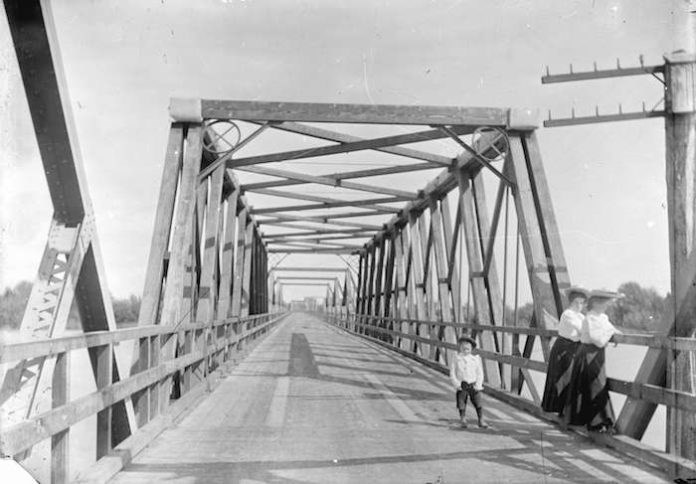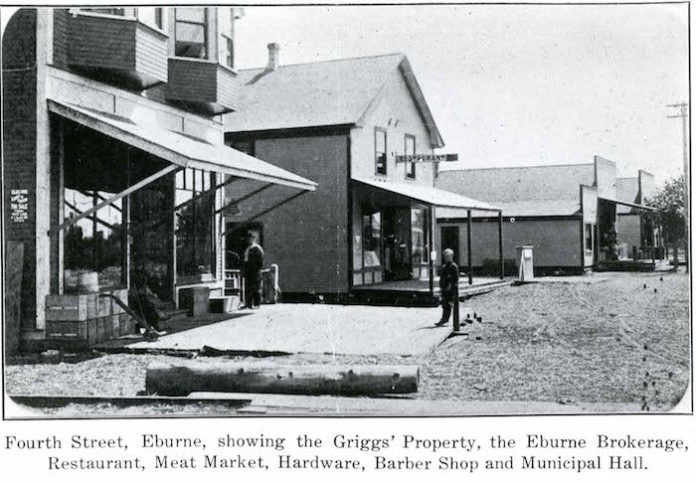Drive off the Oak Street Bridge heading north into Vancouver, and soon you’ll be choosing which major road will carry you on in your travels: Oak, Granville, or even Cambie. But in Vancouver’s early years, it was Hudson Street, to the east of Granville Street, that was a primary thoroughfare for commerce and transportation.
That’s because Hudson Street–known at the turn of the 20th century as 4th Street–had one very desirable feature at its foot at the southern tip of what we now know as Marpole: A bridge over the North Arm of the Fraser River.
Of course, we know the municipality on the south side of the crossing as Richmond, but it wasn’t primarily called Richmond then. The larger piece of land we know as Richmond was called Lulu Island, and the smaller piece of land was Sea Island, and included a vibrant townsite called Eburne. That particular community once stood where the McArthurGlen mall is now. Sea Island and Lulu Island were joined by the Eburne Bridge (about where the Canada Line crossing is now).
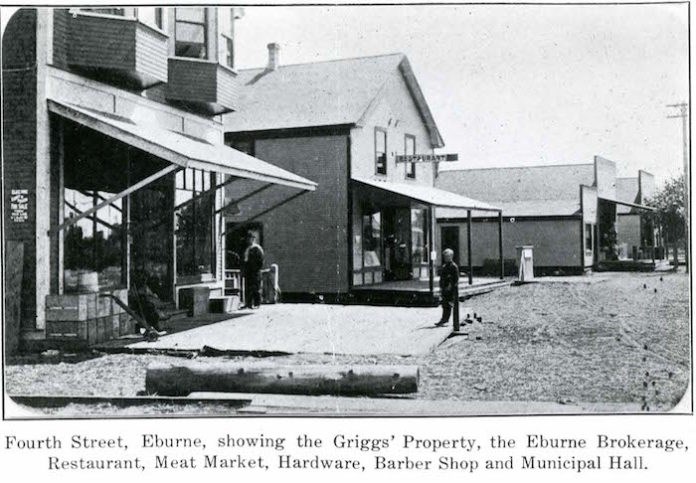
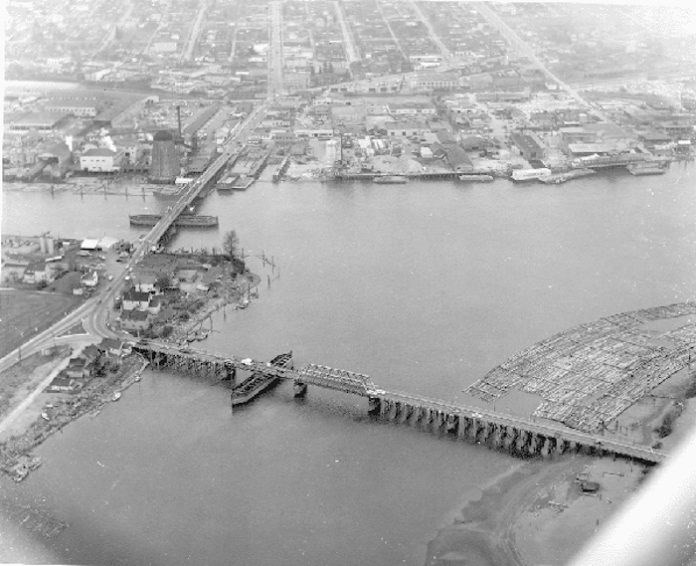
On the north side, those crossing the bridge weren’t going into Vancouver at the time; the southernmost part of the city as we know it now was at times considered Point Grey, and was briefly called Eburne, too. Named for settler William (Harry) Eburne, who started off on the Vancouver side before starting a community on the Richmond side, Eburne eventually became known as Marpole, which is the neighbourhood name to this day. Keeping up? It can definitely get confusing.
The Marpole Bridge was a low-level swing span crossing built in 1901 for vehicle and foot traffic; a rail bridge of the same name has been in place in the same area since about the same time. It was also used for the Vancouver-Steveston interurban streetcar line. That bridge was damaged in 1966, but replaced with one in 1967 that still stands today, and is owned by Canadian Pacific Railway.
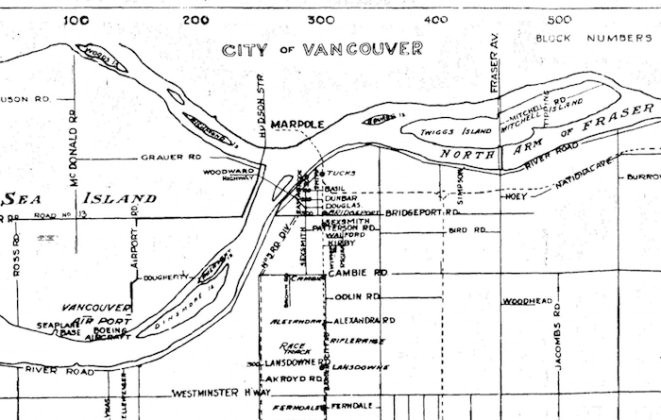
A swing span bridge meant it had to open and close to allow river traffic to pass through. It was also a highly popular crossing for vehicles in the 30s and 40s and into the 50s, particularly after the addition of the air terminal on Sea Island in 1931–yes, that’s what became YVR (Vancouver International Airport). According to Chuck Davis’ Vancouver history, the Marpole Bridge was raised over 7,000 times in 1954 alone.
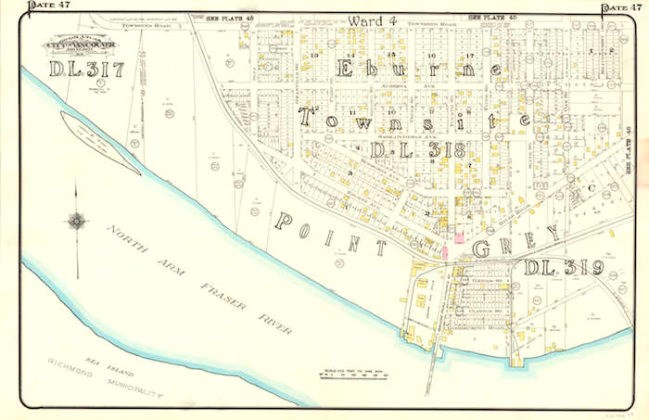
Marpole had enjoyed a tremendous boom in the first part of the 20th century, as the farmlands gave way to developments and when the sawmills began operating in the area. The Eburne Sawmill was located on the west side of Hudson Street at the base of the community right on the river. Hudson Street itself was a central road for businesses, serving as a corridor, though the streetcar used Oak Street.
But all that traffic and usage (not to mention the growing impracticality of operating a swing span bridge) meant that it was time to rethink the North Arm Crossing. The Oak Street Bridge was opened on July 1, 1957. The tolled crossing sent traffic to the east, and as a result, Hudson Street lost business, particularly when the Marpole Bridge was dismantled later that year.
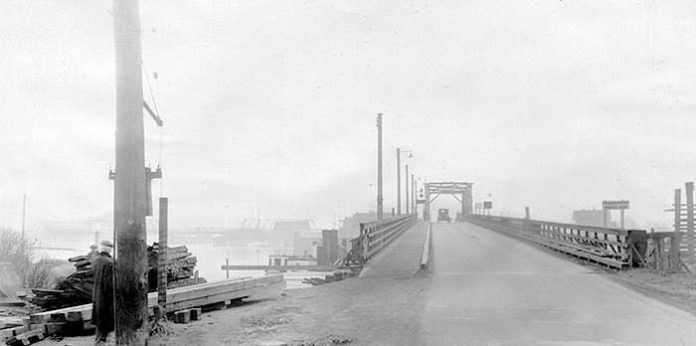
A bridge to Sea Island, called the Moray Bridge, was put in place to remove congestion from the new Oak Street Bridge (which shed its tolls in 1959), but by the early 1970s, the demand was too great. The Arthur Laing Bridge, connecting South Vancouver and the airport, was opened in the exact same spot as the Marpole Bridge, only much higher and minus the swing span.
The next time you’re headed to YVR, imagine a hundred or more years back, when you could stroll across the Marpole Bridge to Eburne, over the North Arm between Marpole and Sea Island.
